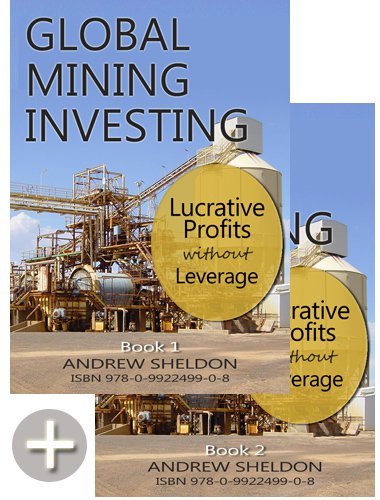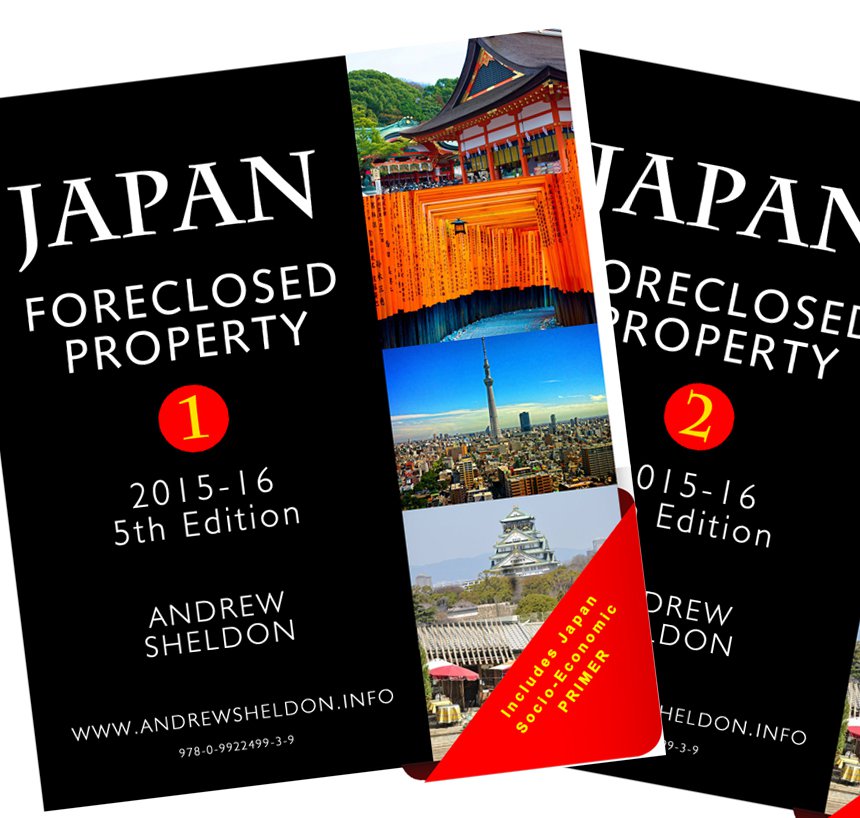 Global Mining Investing $69.95, 2 Volume e-Book Set. Buy here.
Global Mining Investing $69.95, 2 Volume e-Book Set. Buy here.Author, Andrew Sheldon
Global Mining Investing is a reference eBook to teach investors how to think and act as investors with a underlying theme of managing risk. The book touches on a huge amount of content which heavily relies on knowledge that can only be obtained through experience...The text was engaging, as I knew the valuable outcome was to be a better thinker and investor.
While some books (such as Coulson’s An Insider’s Guide to the Mining Sector) focus on one particular commodity this book (Global Mining Investing) attempts (and does well) to cover all types of mining and commodities.
Global Mining Investing - see store
Sunday, February 05, 2012
Focus on copper and nickel
Sunday, September 07, 2008
Nickel prices have reached support
 Thje nickel market is one of the better commodity exposures you can take, and best of all the market price for nickel has reached low levels. This makes a great period to buy nickel as a commodity exposure, though I would not be surprised if the metal pulls back again to test its support once again, particularly as other metals are still yet to bottom. I would caution that nickel miners will also take some time to shine, even if nickel prices are the first to recover among the base metals.
Thje nickel market is one of the better commodity exposures you can take, and best of all the market price for nickel has reached low levels. This makes a great period to buy nickel as a commodity exposure, though I would not be surprised if the metal pulls back again to test its support once again, particularly as other metals are still yet to bottom. I would caution that nickel miners will also take some time to shine, even if nickel prices are the first to recover among the base metals.1. There are a number of attractive projects to invest in WA
2. The market is set for a good rally
3. Nickel is used in stainless steel, and a recent development is the use of stainless steel in the external and internal facades of most buildings. Buildings being BIG, mean that the intensity of consumption in most countries, but particularly developing countries like China, is really taking off. Of course there is a lot of nickel around as well, but there are supply constraints as well.
4. Its a volatile commodity. Once it falls back to support once more I can see it rallying to $25,000/tonne, previous support acting as resistance. It will reach $33,000/tonne in 2009, and I suggest a few years later it will reach that previous high around $54,500/tonne. I don't see this commodities boom over by any means.
-----------------------------------------------
Andrew Sheldon www.sheldonthinks.com
Sunday, February 17, 2008
Nickel stockpiles flat, and prices off their low
 lows.
lows.
As we can see in this 5yr chart, nickel prices are consolidating at current levels (right chart)
-----------------------------------------
Andrew Sheldon www.sheldonthinks.com
Sunday, September 18, 2005
Nickel - a declining story
Nickel is produced from a number of sources:
- Layered intrusives: When ultramafic layered intrusives (molten rock) is emplaced in the earth's crust and precipitates layers of chemically-distinct minerals, its possible for commercial quantities of nickel to accumulate, perhaps in association with chromite, cobalt, copper of platinoid metals (PGMs).
- Nickel laterites: When layered intrusive complexes are subjected to erosion on the earth's surface, the nickel sulphides are oxidised and re-precipitated sub-surface, forming an enriched layer of 'laterite' that often grades 0.5-2% nickel.
The bulk of nickel is produced in just 5 countries - Russia, South Africa, Australia, New Caledonia and the USA, although the Philippines, Indonesia and other African nations are significant producers. Nickel is not rare, so the focus is on the higher grade deposits that can be competitive at low prices, since nickel processing requires considerable investment to produce a high grade concentrate.
In the 1990s, the nickel market was particularly votaile for a number of reasons. The threat of new 'laterite' supply using new high-temp autoclaves meant prices were expected to fall, but 2 keystone projects in Canada & Australia had major setbacks, which undermined the financing for similar projects. The technology has been proven viable, but the experience did demonstrate the risks of new technology. The theory was proven fine, but it was design issues that undermined the project.
Investing in nickel
There are several ways to invest in nickel:
- London Metals Exchange: You can buy spot or forward nickel contracts on the LME - see www.lme.co.uk.
- Equities: You can buy nickel/cobalt producers on the ASX, JSX, TSX and VSE in all shapes and sizes. The largest nickel producers are Minara Res (MRE.ASX) and Sudbury Mines (TSX). You can also buy equities in stainless steel producers in EU, US and Thailand.
The outlook for nickel
In the short term we are likely to see a fall in nickel prices since the US & Chinese property markets are over-priced, as the Western property bubble comes to a close. The US has trailed other markets, but it is set to fall soon. Auto sales in the US fell 12% in Aug'05, the largest fall since 2001. Nickel prices are however unlikely to fall back to prior lows since there are now considerable cost pressures in mining. eg. Raw materials, labour and oil have risen by 30-50%. Much of the price rise has also been caused by weakness in the $US. Higher interest rates will also end the speculative demand by traders for nickel, unless the $US starts falling again.
Nickel prices can be expected to fall back to a consolidation level - remembering that the commercial building sector is still healthy and Japan might yet stage a modest recovery. In addition, buildings are not likely to cancel mid-construction, so we can expect some residual demand to flow through the market.
Long term the outlook for nickel is very strong - driven by Asian construction - particularly in China, India and Eastern Europe. But today, these are very small markets. In 3-4 years, after capacity has been absorbed, we would again expect western markets to dictate market action.
References- Nickel applications: See http://www.nickelinstitute.org/index.cfm/ci_id/25/la_id/1.htm
Nickel recycling: See http://www.nickelinstitute.org/index.cfm/ci_id/6561/la_id/1.htm. There are strong incentives for recycling nickel, though its applications and chemical stability mean that the product has a long life cycle, thus limiting the available scrap supplies. eg. Buildings last for 50yrs.
Statistics
- Base Metals.com: See www.basemetals.com/img/tabs/ni/ni.gif. News service on nickel and other base metals.
The Nickel Institute: See http://www.nickelinstitute.org/, established to promote new & existing nickel consumption. - London Metals Exchange: They provide statistics on spot & forward nickel prices and stockpiles. See www.lme.co.uk.
- Nickel production: Find some stats??
- Nickel consumption: Find some stats??
- Nickel recycling: Find some stats??
- Stainless steel production: See www.stainlesssteel.com ??
 Global Mining Investing $69.95, 2 Volume e-Book Set.
Global Mining Investing $69.95, 2 Volume e-Book Set.Author, Andrew Sheldon
Global Mining Investing is a reference eBook to teach investors how to think and act as investors with a underlying theme of managing risk. The book touches on a huge amount of content which heavily relies on knowledge that can only be obtained through experience...The text was engaging, as I knew the valuable outcome was to be a better thinker and investor.
While some books (such as Coulson’s An Insider’s Guide to the Mining Sector) focus on one particular commodity this book (Global Mining Investing) attempts (and does well) to cover all types of mining and commodities.
Global Mining Investing - see store
Japan Foreclosed Property 2015-2016 - Buy this 5th edition report!
You can view foreclosed properties listed for as little as $US10,000 in Japan thanks to depopulation and a culture that is geared towards working for the state. I bought foreclosed properties in Japan and now I reveal all in our expanded 350+page report. The information you need to know, strategies to apply, where to get help, and the tools to use. We even help you avoid the tsunami and nuclear risks since I was a geologist/mining finance analyst in a past life. Check out the "feedback" in our blog for stories of success by customers of our previous reports.
Download Table of Contents here.






![[Most Recent Quotes from www.kitco.com]](http://www.kitconet.com/charts/metals/gold/t24_au_en_usoz_2.gif)
![[Most Recent Quotes from www.kitco.com]](http://www.kitconet.com/charts/metals/silver/t24_ag_en_usoz_2.gif)
![[Most Recent Quotes from www.kitco.com]](http://www.kitconet.com/charts/metals/platinum/t24_pt_en_uskg_2.gif)
![[Most Recent Quotes from www.kitco.com]](http://www.kitconet.com/charts/metals/palladium/t24_pd_en_usoz_2.gif)